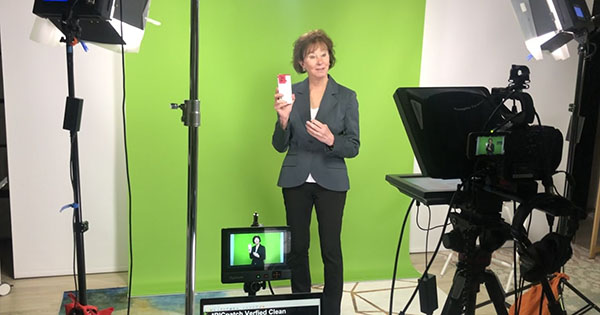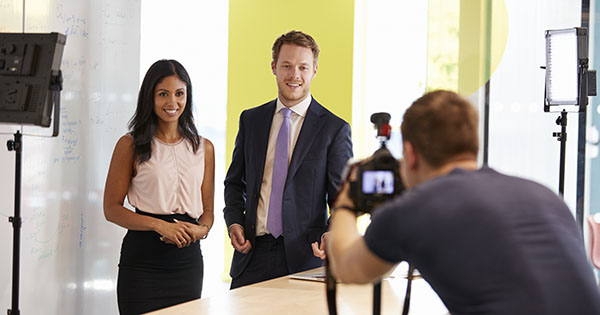How to Dress for Appearing on Video
As an interviewee or presenter
If you have been invited to do a video interview or to present on subject, of course you want to look good on camera! For video, there are a few easy rules to follow. If nothing else, following the one piece of advice below, will set you up to succeed.
The Single Best Thing You Can Do:
The camera likes solid colors. Blue, pastels and natural tones are best. Avoid bright white. A tailored jacket, sweater, blouse or shirt are ideal.
Further advice we supply to all of interviewees or presenters is as follows:
- For greenscreen shoots, do not wear anything green!
- Don't wear clothing with patterns, graphics or logos which might distract attention from your message.
- A busy pattern, such as found on ties and some men's dress shirts (stripes, herringbone or small intricate designs) can create a fuzzy, dancing effect called moire on camera so please do not wear such clothing.
- Jewelry - Large pins, dangling earrings, bulky necklaces, hats and crazy ties are distracting. Avoid bracelets that may clang or make noise when hitting a table. Wear simple jewelry.
- If you're comfortable, wear no glasses. Please do not wear transitional lenses that will turn to sunglasses.
- Make sure your top has a spot to clip a microphone, and avoid wearing ruffles, frills or low necklines.
- You will want your dress to support your professional persona.
- Example: A police officer should wear a uniform, a business person, a solid, tailored suit.
- If possible, bring an extra outfit in case there is something undesirable with the first chosen outfit.
- Nothing with reflective tagging such as found on outdoor fitness apparel
- No large logos that imply endorsement from that company (unless, of course, it's your own company that is being featured in the video!)
- Fitted clothing but not overly tight
- Layers are ideal. Imagine a blazer over a blouse (and the blazer also helps with having something to pin a lavalier mic to!)
- If wearing a buttoned shirt, tuck it in.
- If wearing solid black, include layers like a black blazer over a black button-down shirt. If it is just a black sweater, you may look like a black blob.

Do NOT wear green for greenscreen video shoots
What Specifically Not to Wear
Those above are the most important pointers but if you'd like even more tips, here's a list of specific articles of clothing that are less than ideal for a video interview or presentation:
- Turtle necks -- make it difficult to pin a lavalier mic to
- Preferably no khaki pants, particularly on men -- Why? Because when men are in a seated position, they tend to either spread their legs, or place their foot on their knee. Bunching up then occurs in the crotch area, and khakis with their lighter color and dark creases, don't hide this bunching very well. If the camera is a wide out that includes a shot of their legs and waist.... Well, for a lack of better way of saying this, we don't want the eye drawn to the crotch area.
- Bulky fitting clothing -- anything that is not fitted to the shape looks baggy and lumpy and is accentuated so on camera (maybe the camera really does add 5 pounds!)
- Excessive make up -- natural is preferred. Make up does not have to be emphasized like it does for theater. The video camera is much more intimate. However, we don't mean to step on anyone's personal identity, you should be comfortable with your appearance
- Said it above, but again, please don't wear solid white, particularly for people with darker skin tones.
- No nude color clothing -- because from a distance or at a glance, it can look like you're wearing nothing at all.
- Anything that is too faddish and will "date" the video -- We can't predict the future but there are some articles of clothing that we must know deep inside won't last forever!

Examples of excellent outfits for video from the MiLead Consultant Group
